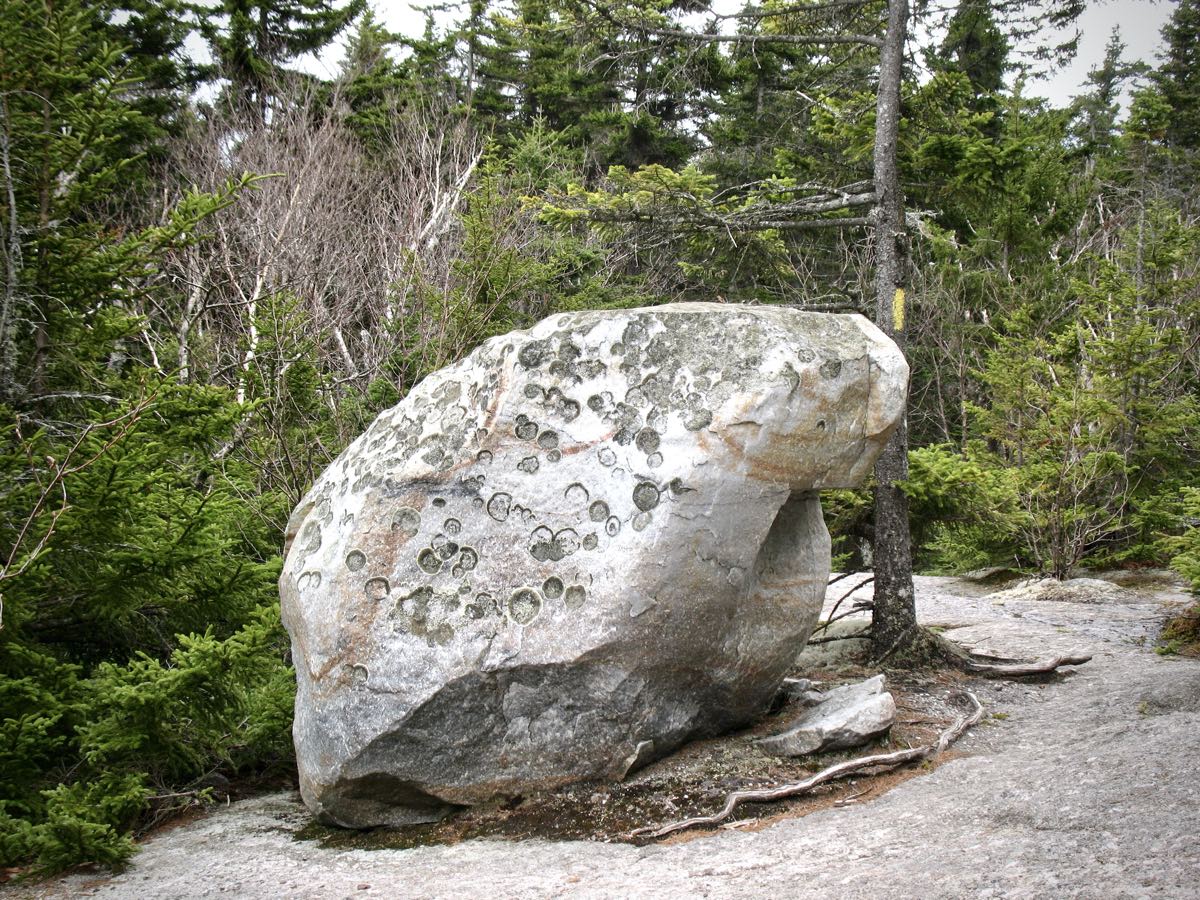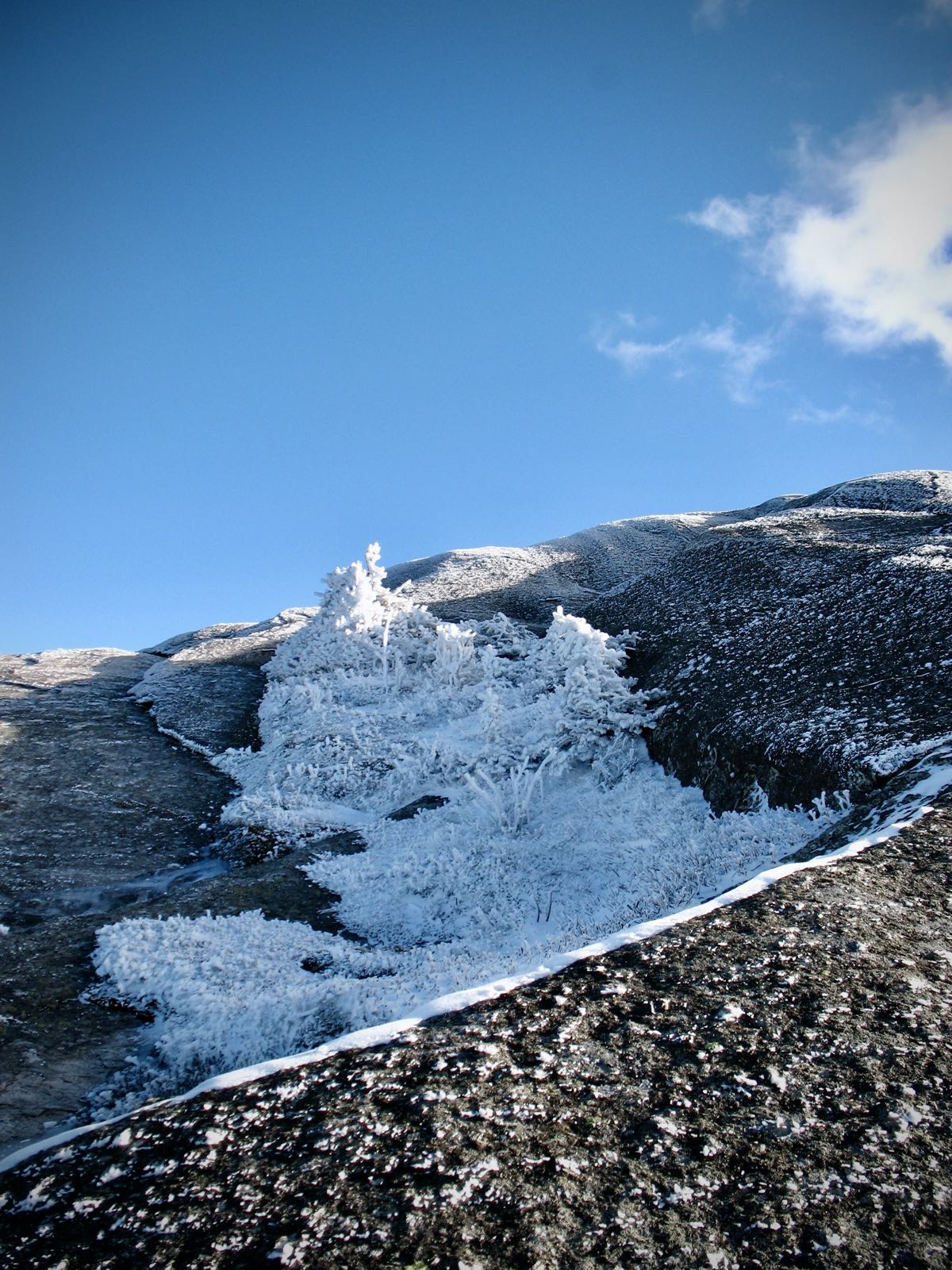What do I find so encouraging about a trail that’s one me wide? Why does it keep me keeping on well past the point where, on an open road or plain, I’d have paused (for a nap, for a nosh, for nothing at all)? Even that next-to-narrowest passage, the doubletrack, which, here in New England, USA, often sets up as an old road nosing into the hills, doesn’t offer the long lure of the one-body- (or one-bear-) wide way.
This happens to me all the time: I set out without much of a plan or ambition, just to secure the foot-part of the day. It is (here, I bow and make offering to my legs, feet, and general freedom, even in a time of pandemic) a necessity… daily. Because I have the local gift of nearby woodland trails, and because I seek them out, it’s usually not long before I board one.
And then, because it is a trail for one, the world draws close. Stolid trees nudge the path this way and that; the ground ripples and curves like a fingerprint; stones endure. I take them all in. Open secret: I think they take me in too. Reciprocity rises. A world of one plus one, you and the forested way, each finding a bit of measure and mirror in the other.
It is, I’ve thought more than once, the heroic journey writ small—a going-out brimming with possibility, or perhaps in retreat from some trouble; a coming back, often a little tattered or battered, but with SOMETHING vital. In the ur-tales, that something is an elixir, a substance or a knowledge that the everyday world needs. The person who arrives home with it is a hero. (To others; who knows about the little stadium of the self?)
Already, however, this little summary threatens to swell too large, to look for CAPS when little letters will do. Heroic journeys writ HUGE need a big stage, an ocean, for instance, which is often seen—conveniently—as a symbol for chaos. Can order be found, won, even imposed amid and on these gnarly waves? It’s all a lot to ask of the daily runner or walker. Leave it to Jason and his argonauts, or to Odysseus and the beached Greeks at Troy. Let’s go little instead, even if that little sometimes aspires to long.
Looping
Part of a singletrack’s pleasure lies in how quickly it leaves the usual world, especially in wooded terrain. A little rise, a small bend, a thicket, the trail winds through; when you look back there’s only this track. You are off, often alone, I’m guessing.
If you are reading this piece, it’s likely that you have perfect mountain loop. One where repeats simply deepen the groove of pleasure, where the head-high quartz boulder that looks like a large frog on the first open ledge is always a lichen-tatted wonder. If I pause and lay an affectionate right arm on its shoulder, I can see north to the stickled fin of the Lafayette Ridge; we, the frog and I, can gaze at another favorite foot-book in my mountain library.

The lichen-tatted, frog-looking rock on author Sandy Stott’s singletrack loop. All photos courtesy of Sandy Stott.
The big ledges just above open onto ridgy layers of remembered scenes: the distant northern White Mountains of many climbs, the near tributary ridge of my first solo at age 12, the blueberry scraggle that’s always bear-pawed in season.
Press on or pause again to gaze? The ridge-runner’s dilemma.
But these big ledges are prelude… to a whole open top above, and another beyond. And so, with that promise, it’s on y va.
That top must not be too easily won, however. I need a trial and here, mid-trail, it is. Back between two pines and into the woods, which grow at odd angles from a strew of boulders that then meet a near-vertical ridge-face. No way up this as a biped; time to go quad. I grab and haul. Some of the roots are handworn; here everything is holding on. If the rock’s dry I can scrabble up the center; if it’s wet I need to skirt the edge and make a ladder of the slippery roots. But it’s also only the length of a couple of playing fields set on edge, and soon, I’m up.
One bald top underfoot, another across a run-ridge a half-mile ahead. For this while I get to be sky-creature. I am whooping happy, and if I weren’t breathing so hard, I’d be whooping. As a boy on family climbs, I always ran ahead over these open ledges, my sneakers slapping along, Brownie, our family dog, trying to get at my laces. This was freedom; it still is.
That I’ve known this trail for over half a century narrows and deepens it across this open stretch. A 30-foot slant of rock rises before me, and in its gray granite, a seam of dark mineral angles up. I always take this little causeway. Near the top it flattens across a narrow ledge that ices in winter, but even then the roughened rock holds my tread. I’m across in two steps.
Where will I pause, gaze, and gather pictures for the show that runs often in my head? Even that adheres to a set line: the summit knuckle of Firescrew’s a given, as is the hump of intermediate saddle before the sharp uptick of Cardigan. North look from Firescrew—genuflection to Moosilauke’s broad dome, white for six months each year; from the saddle—appraisal of the smooth northeast cliffs of Cardigan. But known trails, this trail, are still about motion, about the way our former selves vanish around a corner spruce, or come climbing out of a small, hidden seam. I follow them.
Which is to say I’m dull? Child or churl of routine too set in his way? I hope not. I think not. Because each crossing of this ridge, each loop of this trail lines through a different day, lines out variation from a scatter of selves. Each is a singular way on a singular day.
Apex: Mount Cardigan, treeless since 1856’s wildfire, is the high point of the day’s way, and here I always pause. Little balconies of stone overlook the east face, offer you a raptor’s view of the Shem Valley, and if the wind is in the west as it often is, a little shelter too. To the northeast, Mount Washington flares large above its brethren Whites, its Presidential Range kin, a lumped ridgeline leading north. Feed and water the foot-animal here, and in a monkish cell set in stone, give off a tiny prayer or poem, or a tossed confetti of thanks midway.

The view from Mount Cardigan over the summit of Firescrew in the middle ground and toward the White Mountains about 30 miles away.
The trail leaves the summit heading west and soon splits; my loop turns south onto steep, grippy ledges, and we are going down, arms outstretched to the flair and flap of balance. Here’s the one place I untrack. Each time down I take a different line, though in their multitude, their hundreds of history-lines, they crisscross and piggyback on each other. It is imagined flight, directed by air.
The woods come up fast, and the trail threads two trees, and we are off, down, back on track. Single person, single path, I run down like thin water.
Coda: for those who like stats, this loop runs 10 kilometers, climbing and descending roughly 2,000 feet; it accepts you at any speed, from the storm- or schedule-hurried to the all-day-idler. And when you are down, you will begin plotting your return.
Call for Comments
- To use Sandy Stott’s words, what do you find encouraging about a trail that’s just “one me wide?”
- Does running on a narrow singletrack trail make you think or feel differently than when you are running on a bike path, dirt road, or wider trail?
- Do you have a favorite singletrack loop that you return to over and over? Can you share a few details about your loop?


